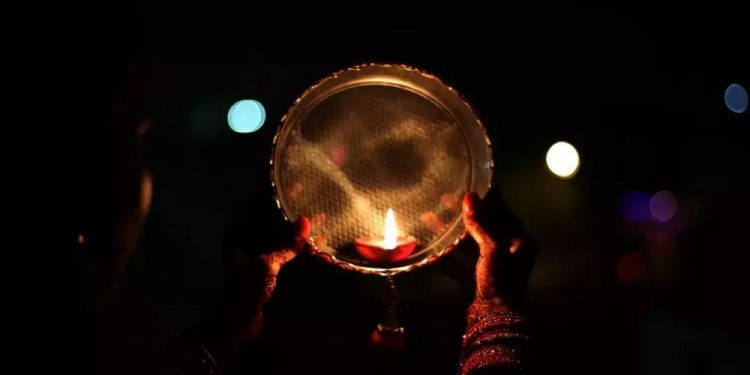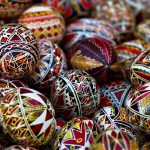
Karwa Chauth
Observed by married Hindu women, Karva Chauth is a holiday festival that falls on the fourth day after Purnima (the full moon) in the month of Kartika. On this day, women, especially those from Northern India, fast from sunrise to moonrise to ensure the safety and longevity of their husbands.
This holiday is celebrated by Indian women all over the globe, but it primarily occurs in the states of Delhi, Punjab, Haryana, Himachal Pradesh, Jammu, and Madhya Pradesh. The literal meaning of Karva Chauth in English is “Fourth Pot,” a reference to the fact that it falls on the fourth day of the fortnight.
The Origins of Karva Chauth
Even though no one truly knows when this holiday originated or who created it, there are some theories about its origin. Some people believe that it was created by women during wartime. When husbands left to go to war, which was fairly common in Indian history, the women would say prayers for their safety and longevity. This festival also falls around the time when wheat is sown, so it may also be a holiday that coincided with prayers to ensure a good harvest.
Rituals and Traditions of Karva Chauth
Several days before the holiday begins, women start making preparations for its celebration. They begin by buying jewelry, adornments, and Karwa lamps. This time before the holiday is very much like Christmas time in other cultures, with bazaars all over Northern India beginning to sell all kinds of holiday merchandise for women to purchase.
After they have obtained all their holiday products, women are then ready to celebrate the holiday. They get up before dawn to eat and drink. Many will eat Soot Feni—a dessert made with milk and sugar—supposedly making it easier for them to go without water until the next day. At dawn, the fast begins, and women will not eat as they perform various rituals.
Another thing that women will avoid is doing housework for the day. Instead, they gather with one another and apply cosmetics and henna to each other. This holiday is one in which women meet with friends and relatives.
It’s also customary for women to exchange painted clay pots filled with small items of clothing, bangles, homemade candy, and bangles. Some communities also stage harvest festivals at the same time as this holiday. Parents often send their married daughters gifts on this date.
When evening comes, a women-only ceremony is held by the community. All the women dress in their finest clothing and wear their best jewelry. Often, the dresses worn are in colors of orange, gold, and red—colors that are considered very auspicious. Stories are narrated on this night to all those in attendance. There are also poems recited and songs sung by everyone.








